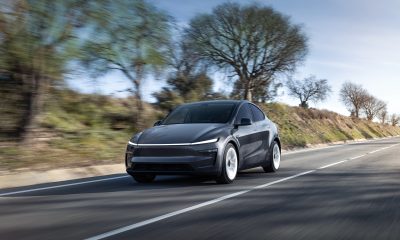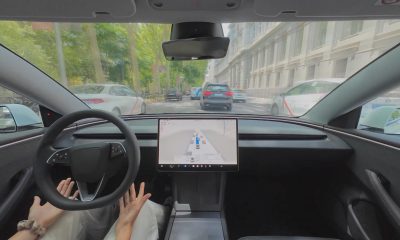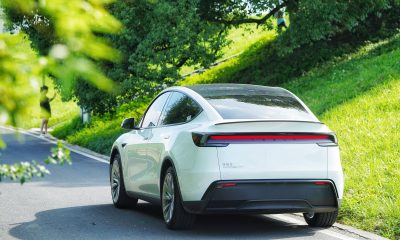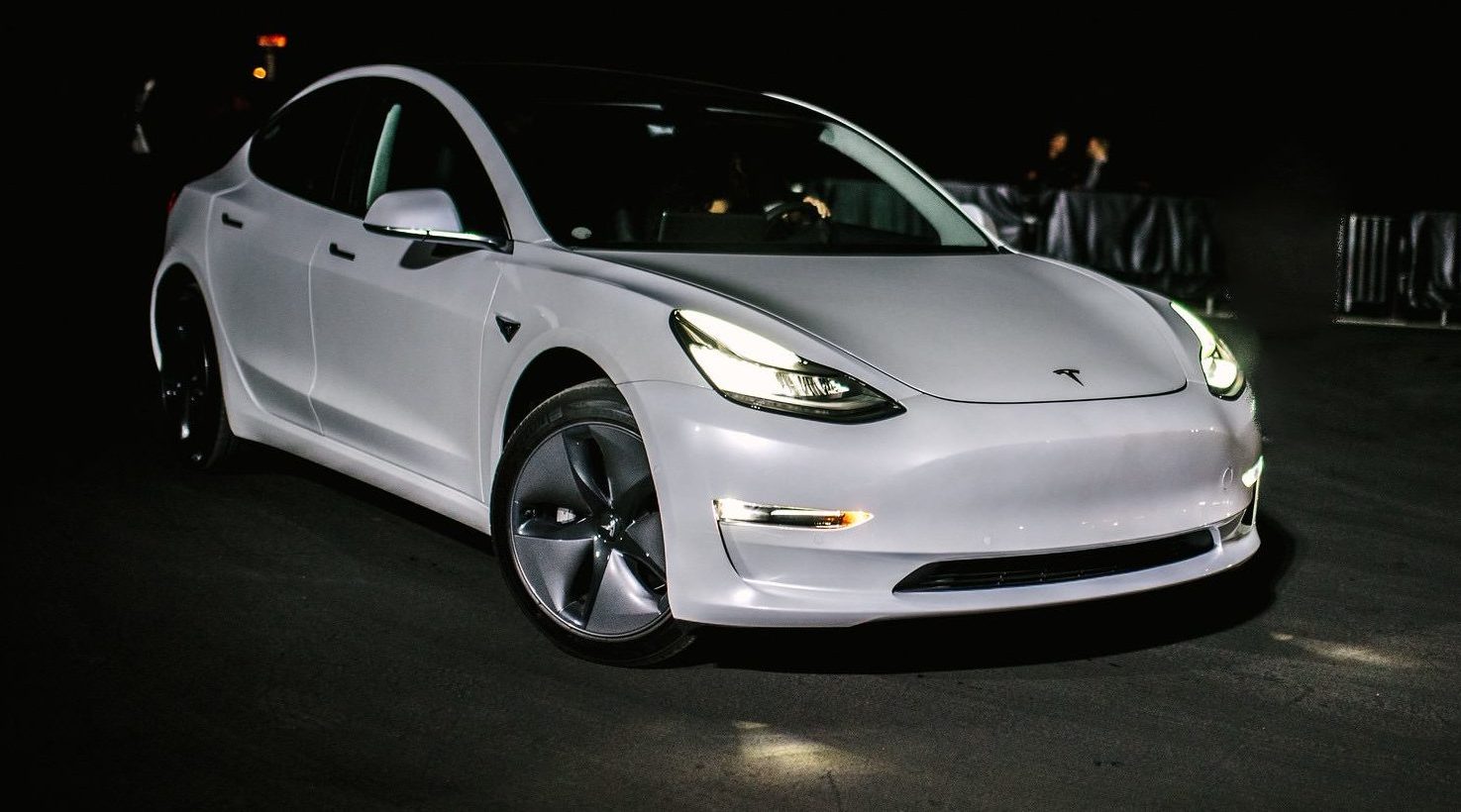

Investor's Corner
Tesla Model 3 headlights gain the IIHS’ elusive ‘Good’ rating after design update
Earlier this year, the Insurance Institute for Highway Safety (IIHS), a nonprofit organization dedicated to reducing the number of accidents and injuries on the road, awarded the Tesla Model 3’s headlights with an “Acceptable” rating. While the IIHS’ tests gave a “Superior” rating for the vehicle’s front crash avoidance features then, the safety organization only listed the vehicle’s headlights as “Acceptable,” due to glaring issues from the Model 3’s low beams.
In a recent Twitter announcement, though, the IIHS noted that the Tesla Model 3 now earns a “Good” rating for its standard LED reflector headlights. The IIHS stated that the vehicle’s improved, updated score reflects the headlights of Model 3 that were produced after June 2018, a time when Tesla was starting to hit its stride with the production of the electric sedan.
The IIHS’ updated results could be seen in the Model 3’s page on the nonprofit’s website. So far, though, the IIHS has not released the Model 3’s official full safety ratings, which include metrics such as “Roof Strength” and “LATCH ease of use.”
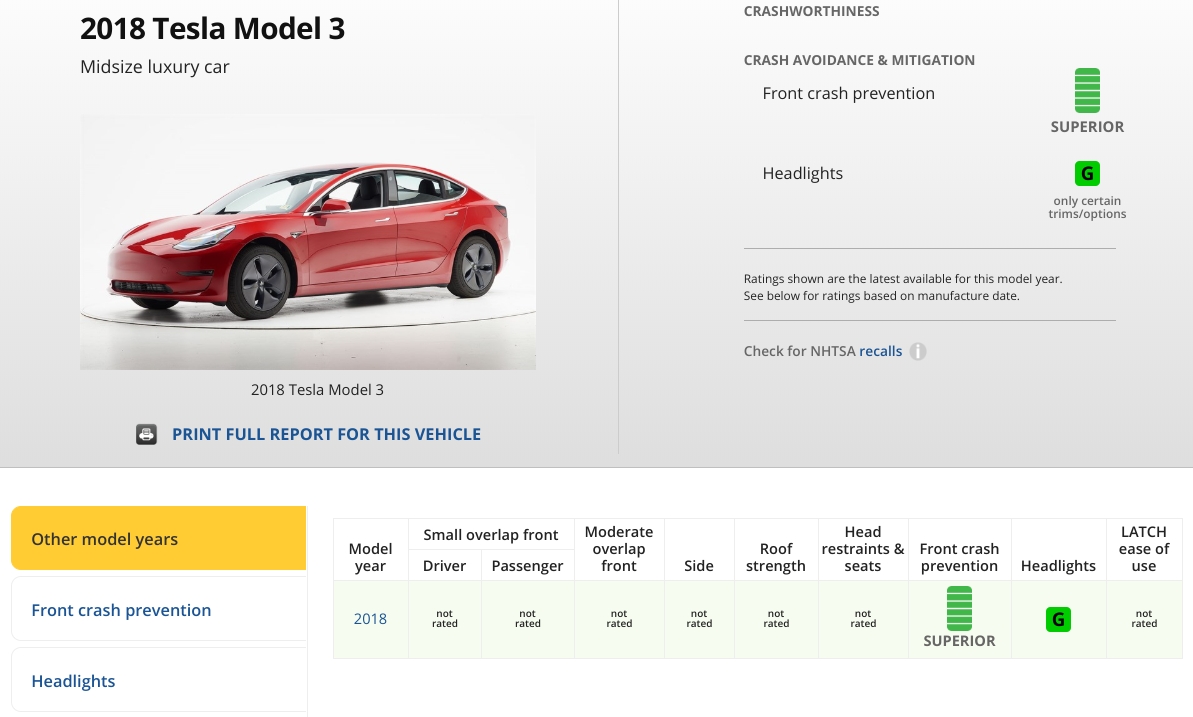
That said, the Model 3’s “Good” rating for its headlights says a lot about Tesla’s focus on designing an incredibly safe electric car. The IIHS, after all, utilizes one of the strictest metrics for testing headlights. The headlights of the Tesla Model S, for one, were given a “Poor” rating by the IIHS. The Chevy Bolt EV’s headlights, which are incredibly bright, were also rated as “Poor.”
The IIHS evaluates headlights based on the lamps’ reach as the vehicle travels on straight and curved lines. Low beams are measured on five approaches — straightaways, left and right curves on an 800-foot radius, and sharp left and right curves on a 500-foot radius. The IIHS weighs low beams more heavily than high beams since they are used more often when driving. During the Model 3’s initial tests earlier this year, the vehicle’s low beams exhibited a 15.2% glare during straightways, preventing the Model 3 from earning the IIHS’ “Good” rating. As noted by the IIHS, this particular issue was addressed in Model 3 produced after Q2 2018.
The updated score of the Model 3’s headlights highlights Tesla’s unique tendency to update its vehicles as soon as improvements are available. This was pointed out by Elon Musk on Twitter, when he stated that when it comes to Tesla’s electric cars, there is “no such thing as a full refresh” since all vehicles are “partially upgraded every month as soon as a new subsystem is ready for production.” This practice was also mentioned by Tesla President of Automotive Jerome Guillen in an interview with CNBC, when he noted that the company’s technology is always in a process of evolution.
The 2018 Tesla Model 3 now earns a good rating for its standard LED reflector headlights for models built after June 2018. Previous models earn an acceptable rating. https://t.co/EUWXFLBnkm pic.twitter.com/TOctSTGaAl
— IIHS (@IIHS_autosafety) December 26, 2018
In a statement to CNET, IIHS senior vice president for communications Russ Rader explained the organization’s focus on headlights as a metric for vehicle safety. Rader also noted that headlights must be seen not just as a decorative component of a vehicle. Instead, they should be perceived as safety equipment.
“When one vehicle’s low beams only illuminate the right side of a straightaway for 148 feet, and another vehicle’s low beams allow a driver to see more than twice as far, there’s a problem. IIHS has incorporated headlight performance into our Top Safety Pick awards. We’re already seeing manufacturers make improvements, especially tightening up aim at the factory. Headlights shouldn’t just be about what looks cool. They’re important safety equipment. When they perform well, they can help drivers spot trouble sooner and avoid a crash.”
Apart from the IIHS, the Model 3 is also gaining accolades from other safety organizations. The National Highway Traffic Safety Administration (NHTSA), for one, has given the Model 3 a flawless 5-Star Safety Rating. The organization tested the Model 3 on frontal crash, side crash, and rollover safety; and in all categories and subcategories, the electric car displayed a level of industry-leading driver and passenger safety. As highlighted by Tesla in a following blog post, the scores of the Model 3 from the NHTSA’s tests place the electric car as the vehicle with the “lowest probability of injury” among all cars tested by the NHTSA to date.
Elon Musk
Tesla analyst issues stern warning to investors: forget Trump-Musk feud

A Tesla analyst today said that investors should not lose sight of what is truly important in the grand scheme of being a shareholder, and that any near-term drama between CEO Elon Musk and U.S. President Donald Trump should not outshine the progress made by the company.
Gene Munster of Deepwater Management said that Tesla’s progress in autonomy is a much larger influence and a significantly bigger part of the company’s story than any disagreement between political policies.
Munster appeared on CNBC‘s “Closing Bell” yesterday to reiterate this point:
“One thing that is critical for Tesla investors to remember is that what’s going on with the business, with autonomy, the progress that they’re making, albeit early, is much bigger than any feud that is going to happen week-to-week between the President and Elon. So, I understand the reaction, but ultimately, I think that cooler heads will prevail. If they don’t, autonomy is still coming, one way or the other.”
BREAKING: GENE MUNSTER SAYS — $TSLA AUTONOMY IS “MUCH BIGGER” THAN ANY FEUD 👀
He says robotaxis are coming regardless ! pic.twitter.com/ytpPcwUTFy
— TheSonOfWalkley (@TheSonOfWalkley) July 2, 2025
This is a point that other analysts like Dan Ives of Wedbush and Cathie Wood of ARK Invest also made yesterday.
On two occasions over the past month, Musk and President Trump have gotten involved in a very public disagreement over the “Big Beautiful Bill,” which officially passed through the Senate yesterday and is making its way to the House of Representatives.
Musk is upset with the spending in the bill, while President Trump continues to reiterate that the Tesla CEO is only frustrated with the removal of an “EV mandate,” which does not exist federally, nor is it something Musk has expressed any frustration with.
In fact, Musk has pushed back against keeping federal subsidies for EVs, as long as gas and oil subsidies are also removed.
Nevertheless, Ives and Wood both said yesterday that they believe the political hardship between Musk and President Trump will pass because both realize the world is a better place with them on the same team.
Munster’s perspective is that, even though Musk’s feud with President Trump could apply near-term pressure to the stock, the company’s progress in autonomy is an indication that, in the long term, Tesla is set up to succeed.
Tesla launched its Robotaxi platform in Austin on June 22 and is expanding access to more members of the public. Austin residents are now reporting that they have been invited to join the program.
Elon Musk
Tesla surges following better-than-expected delivery report
Tesla saw some positive momentum during trading hours as it reported its deliveries for Q2.

Tesla (NASDAQ: TSLA) surged over four percent on Wednesday morning after the company reported better-than-expected deliveries. It was nearly right on consensus estimations, as Wall Street predicted the company would deliver 385,000 cars in Q2.
Tesla reported that it delivered 384,122 vehicles in Q2. Many, including those inside the Tesla community, were anticipating deliveries in the 340,000 to 360,000 range, while Wall Street seemed to get it just right.
Tesla delivers 384,000 vehicles in Q2 2025, deploys 9.6 GWh in energy storage
Despite Tesla meeting consensus estimations, there were real concerns about what the company would report for Q2.
There were reportedly brief pauses in production at Gigafactory Texas during the quarter and the ramp of the new Model Y configuration across the globe were expected to provide headwinds for the EV maker during the quarter.
At noon on the East Coast, Tesla shares were up about 4.5 percent.
It is expected that Tesla will likely equal the number of deliveries it completed in both of the past two years.
It has hovered at the 1.8 million mark since 2023, and it seems it is right on pace to match that once again. Early last year, Tesla said that annual growth would be “notably lower” than expected due to its development of a new vehicle platform, which will enable more affordable models to be offered to the public.
These cars are expected to be unveiled at some point this year, as Tesla said they were “on track” to be produced in the first half of the year. Tesla has yet to unveil these vehicle designs to the public.
Dan Ives of Wedbush said in a note to investors this morning that the company’s rebound in China in June reflects good things to come, especially given the Model Y and its ramp across the world.
He also said that Musk’s commitment to the company and return from politics played a major role in the company’s performance in Q2:
“If Musk continues to lead and remain in the driver’s seat, we believe Tesla is on a path to an accelerated growth path over the coming years with deliveries expected to ramp in the back-half of 2025 following the Model Y refresh cycle.”
Ives maintained his $500 price target and the ‘Outperform’ rating he held on the stock:
“Tesla’s future is in many ways the brightest it’s ever been in our view given autonomous, FSD, robotics, and many other technology innovations now on the horizon with 90% of the valuation being driven by autonomous and robotics over the coming years but Musk needs to focus on driving Tesla and not putting his political views first. We maintain our OUTPERFORM and $500 PT.”
Moving forward, investors will look to see some gradual growth over the next few quarters. At worst, Tesla should look to match 2023 and 2024 full-year delivery figures, which could be beaten if the automaker can offer those affordable models by the end of the year.
Investor's Corner
Tesla delivers 384,000 vehicles in Q2 2025, deploys 9.6 GWh in energy storage
The quarter’s 9.6 GWh energy storage deployment marks one of Tesla’s highest to date.
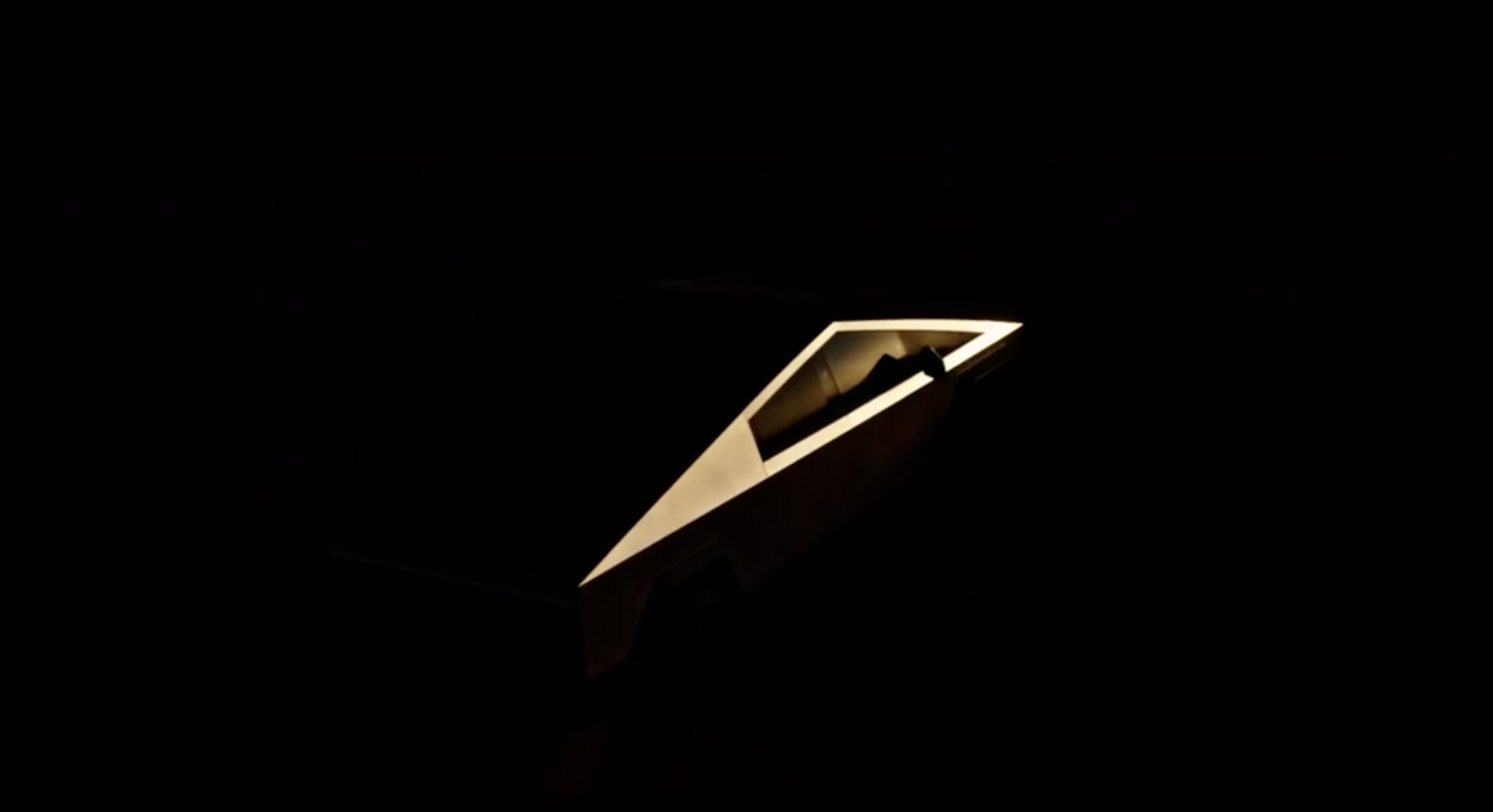
Tesla (NASDAQ: TSLA) has released its Q2 2025 vehicle delivery and production report. As per the report, the company delivered over 384,000 vehicles in the second quarter of 2025, while deploying 9.6 GWh in energy storage. Vehicle production also reached 410,244 units for the quarter.
Model 3/Y dominates output, ahead of earnings call
Of the 410,244 vehicles produced during the quarter, 396,835 were Model 3 and Model Y units, while 13,409 were attributed to Tesla’s other models, which includes the Cybertruck and Model S/X variants. Deliveries followed a similar pattern, with 373,728 Model 3/Ys delivered and 10,394 from other models, totaling 384,122.
The quarter’s 9.6 GWh energy storage deployment marks one of Tesla’s highest to date, signaling continued strength in the Megapack and Powerwall segments.

Year-on-year deliveries edge down, but energy shows resilience
Tesla will share its full Q2 2025 earnings results after the market closes on Wednesday, July 23, 2025, with a live earnings call scheduled for 4:30 p.m. CT / 5:30 p.m. ET. The company will publish its quarterly update at ir.tesla.com, followed by a Q&A webcast featuring company leadership. Executives such as CEO Elon Musk are expected to be in attendance.
Tesla investors are expected to inquire about several of the company’s ongoing projects in the upcoming Q2 2025 earnings call. Expected topics include the new Model Y ramp across the United States, China, and Germany, as well as the ramp of FSD in territories outside the US and China. Questions about the company’s Robotaxi business, as well as the long-referenced but yet to be announced affordable models are also expected.
-

 Elon Musk4 days ago
Elon Musk4 days agoTesla investors will be shocked by Jim Cramer’s latest assessment
-

 News1 week ago
News1 week agoTesla Robotaxi’s biggest challenge seems to be this one thing
-

 Elon Musk2 weeks ago
Elon Musk2 weeks agoFirst Look at Tesla’s Robotaxi App: features, design, and more
-

 News2 weeks ago
News2 weeks agoSpaceX and Elon Musk share insights on Starship Ship 36’s RUD
-

 News2 weeks ago
News2 weeks agoWatch Tesla’s first driverless public Robotaxi rides in Texas
-

 News1 week ago
News1 week agoWatch the first true Tesla Robotaxi intervention by safety monitor
-

 News2 weeks ago
News2 weeks agoTesla has started rolling out initial round of Robotaxi invites
-

 Elon Musk2 weeks ago
Elon Musk2 weeks agoTesla to launch in India in July with vehicles already arriving: report


